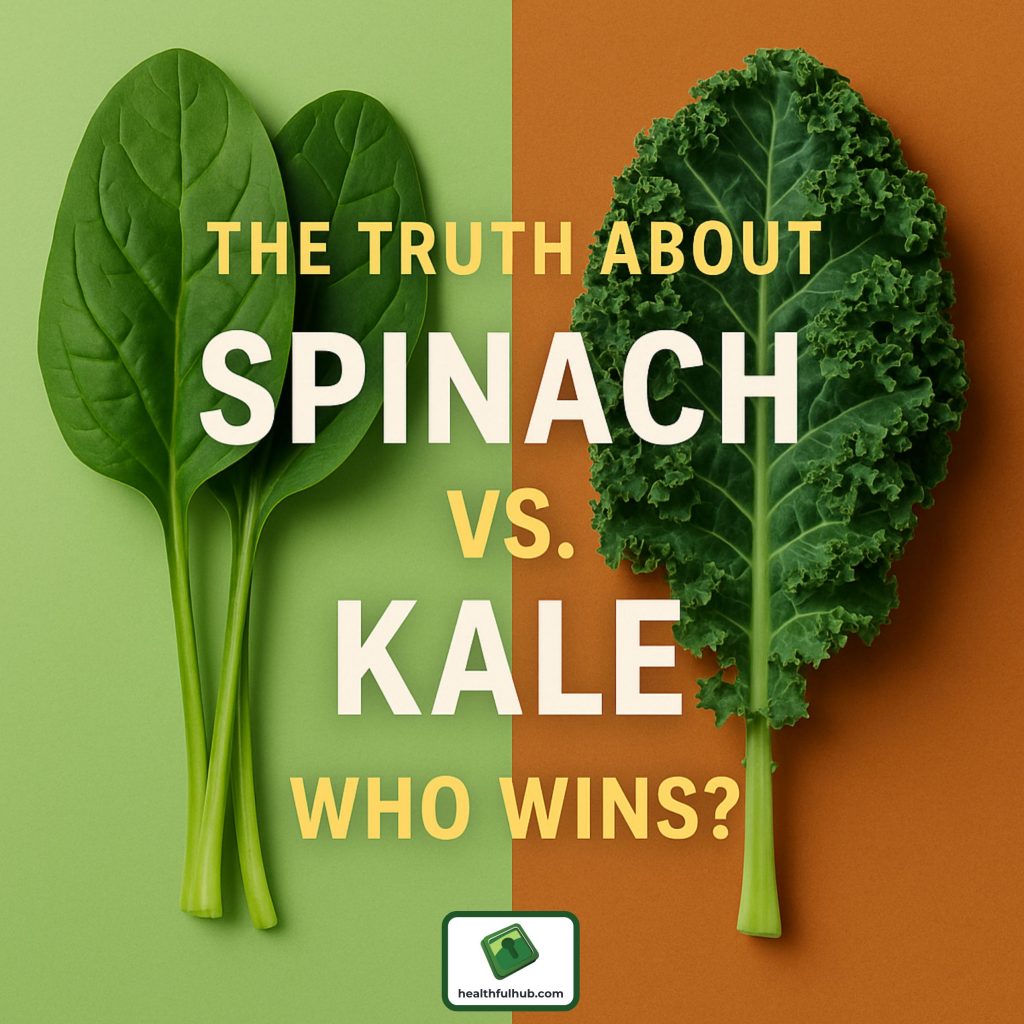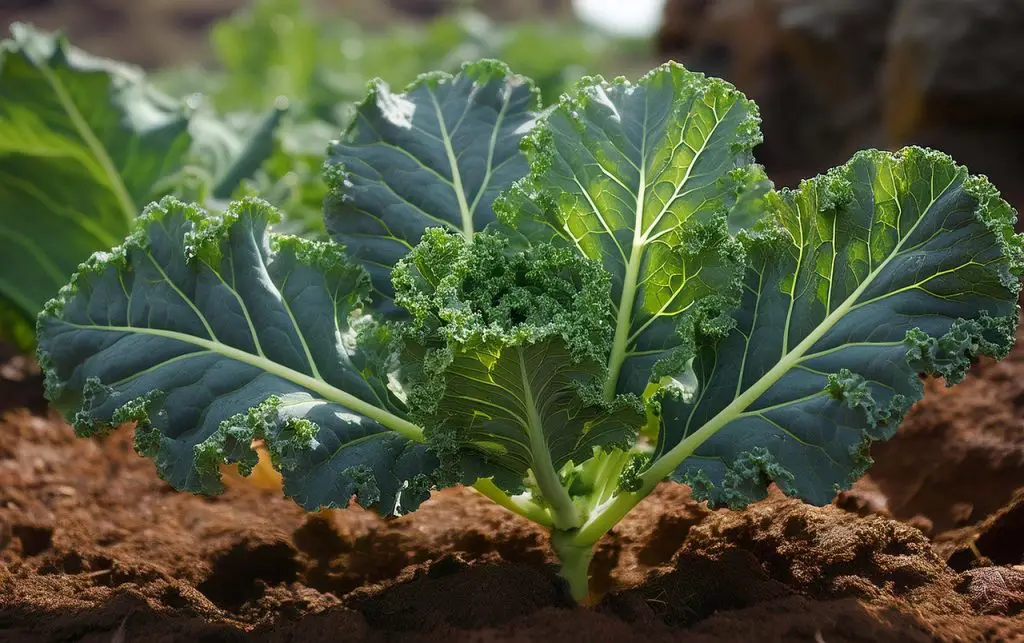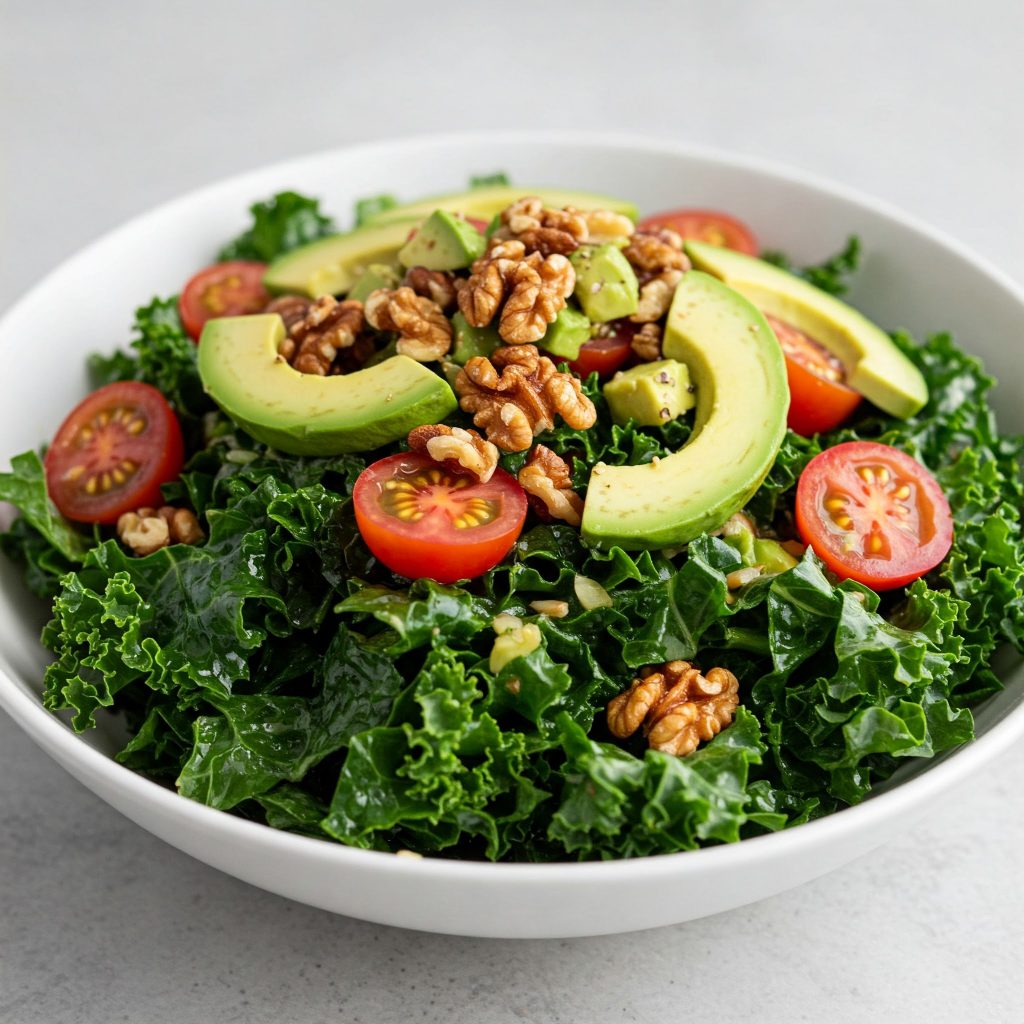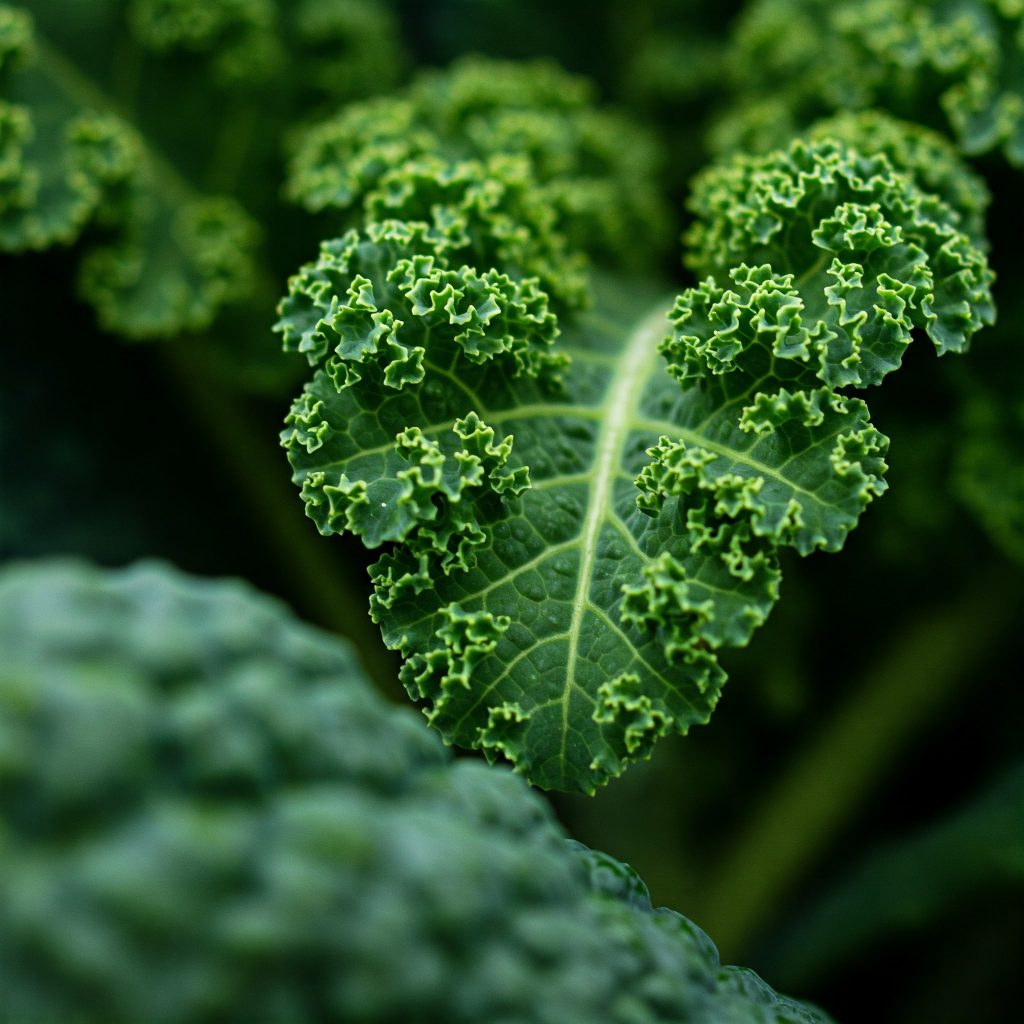
Introduction
Leafy greens are nutritional powerhouses, and spinach and kale stand out as two of the most celebrated options. Both are packed with vitamins, minerals, and antioxidants, making them fantastic choices for a healthy diet. This article dives into the health benefits of spinach and kale, comparing their unique qualities while highlighting why both deserve a spot on your plate. We’ll explore their contributions to wellness, backed by science, and share practical ways to enjoy them. Let’s embark on this green journey with enthusiasm!
The debate over spinach versus kale often sparks curiosity, but there’s no need to choose one over the other. Each offers distinct advantages, and together, they complement a balanced lifestyle. Whether you’re aiming to boost immunity, improve heart health, or simply feel more vibrant, these greens deliver. By examining their nutritional profiles, we’ll uncover how spinach and kale shine in their own ways. Ready to discover their benefits? Let’s dive in!
Nutritional Breakdown: Spinach and Kale
Spinach is a nutrient-dense green with a mild flavor, making it a versatile addition to meals. One cup of raw spinach provides about 7 calories, yet it’s loaded with vitamins A, C, and K, plus folate and iron.1 Its high vitamin K content supports bone health, while antioxidants like lutein promote eye health. Spinach also contains nitrates, which may help lower blood pressure. Isn’t it amazing how such a light leaf packs such a punch?
Kale, on the other hand, boasts a robust nutritional profile with a slightly heartier texture. A cup of raw kale offers around 33 calories and is rich in vitamins A, C, and K, as well as manganese and fiber.2 Kale’s antioxidants, including quercetin and kaempferol, combat inflammation and protect against chronic diseases. Additionally, its fiber content supports digestion. Both greens are low in calories, so you can enjoy them generously!

Vitamins and Minerals: A Closer Look
Spinach and kale are both excellent sources of vitamin A, which supports vision, skin health, and immune function.3 However, kale edges out slightly with higher levels of vitamin C, a powerful antioxidant that boosts collagen production and fights off colds. Meanwhile, spinach offers more folate, essential for cell division and pregnancy health. Both greens provide a hefty dose of vitamin K, crucial for blood clotting and bone strength.
Moreover, kale contains more calcium per serving, which is great for those seeking plant-based sources for strong bones. Spinach, while lower in calcium, has more iron, aiding oxygen transport in the blood.4 Fortunately, both greens complement each other, so mixing them in meals maximizes nutrient intake. Why not toss them together in a salad for a double dose of goodness?
Antioxidant Power: Fighting Free Radicals
Antioxidants are key to reducing oxidative stress, and both spinach and kale excel in this area. Spinach contains lutein and zeaxanthin, which protect eyes from age-related macular degeneration. These compounds also reduce inflammation, keeping your body feeling youthful. Plus, spinach’s beta-carotene supports skin health and immunity. It’s incredible how a simple green can do so much!
Similarly, kale is packed with flavonoids like quercetin, which have anti-inflammatory and anti-cancer properties.5 Its high vitamin C content further enhances its antioxidant capabilities, neutralizing free radicals that can damage cells. Consequently, both greens help lower the risk of chronic diseases like heart disease and cancer. By including them regularly, you’re giving your body a natural defense system.

Heart Health: Greens That Love Your Heart
Spinach and kale both contribute to cardiovascular wellness in remarkable ways. Spinach’s nitrates help dilate blood vessels, improving blood flow and reducing blood pressure. Additionally, its potassium content balances sodium levels, supporting heart rhythm. Studies suggest that regular spinach consumption may lower the risk of heart disease. Isn’t that a compelling reason to add it to your plate? Source: European Journal of Epidemiology.
Kale, meanwhile, contains heart-healthy omega-3 fatty acids, which reduce inflammation and improve cholesterol levels. Its fiber also binds to bile acids, lowering LDL (bad) cholesterol. Furthermore, kale’s magnesium supports healthy blood pressure. Both greens work synergistically to keep your heart strong, so you can enjoy them in soups, smoothies, or stir-fries for a heart-loving meal.
Digestive Benefits: Supporting Gut Health
A healthy gut is essential for overall wellness, and both spinach and kale promote digestion. Spinach’s fiber content, though moderate, helps regulate bowel movements and prevent constipation. Its magnesium also supports muscle relaxation in the digestive tract. As a result, spinach is gentle on the stomach, making it ideal for sensitive digestive systems.
Kale, with its higher fiber content, acts as a prebiotic, feeding beneficial gut bacteria. This supports a balanced microbiome, which is linked to better immunity and mood. Additionally, kale’s glucosinolates may protect the stomach lining. By rotating both greens in your diet, you’re nurturing your gut in diverse ways. Why not try a kale smoothie or spinach soup today?

Bone Health: Building Strength Naturally
Strong bones are vital at any age, and spinach and kale deliver key nutrients for skeletal health. Spinach is a superstar for vitamin K, which activates proteins that bind calcium to bones. It also provides magnesium, which enhances bone density.6 Consequently, spinach is a fantastic choice for preventing osteoporosis, especially for those avoiding dairy.
Kale, on the other hand, offers more calcium and vitamin C, both essential for bone formation and repair. Its vitamin K content rivals spinach, ensuring bones stay resilient. Moreover, kale’s antioxidants reduce inflammation that can weaken bones over time. Including both greens in your meals supports a sturdy skeleton, so toss them into your next dish!
Eye Health: Seeing the Benefits
Your eyes deserve care, and spinach and kale are champions for vision health. Spinach’s lutein and zeaxanthin filter harmful blue light, protecting the retina and reducing the risk of cataracts. These nutrients also improve visual acuity, helping you see clearly.7 It’s remarkable how a handful of spinach can safeguard your sight! Source: Archives of Ophthalmology.
Kale matches spinach with its own lutein and zeaxanthin, plus vitamin A for maintaining corneal health. Its antioxidants combat oxidative stress in the eyes, which is especially important in our screen-heavy world. Therefore, both greens are allies for long-term eye health. Try blending them into a green smoothie for a vision-boosting treat.

Weight Management: Low-Calorie, High-Nutrient Options
For those aiming to maintain or lose weight, spinach and kale are ideal. Spinach is incredibly low in calories—only 7 per cup—yet it’s filling due to its fiber and water content. It also provides protein, which promotes satiety. As a result, spinach is perfect for bulking up meals without adding calories.
Kale, while slightly higher in calories, is still a lightweight at 33 calories per cup. Its fiber keeps you full longer, reducing cravings. Additionally, kale’s nutrient density ensures you’re nourished without overeating. Both greens support weight goals, so experiment with them in salads, wraps, or low-calorie soups.
Immune Support: Boosting Your Defenses
A strong immune system is your body’s shield, and spinach and kale fortify it. Spinach’s vitamin A and folate enhance immune cell function, helping you fend off infections. Its vitamin C also stimulates white blood cell production. Thus, spinach is a reliable ally during cold and flu season.
Kale, with its superior vitamin C content, supercharges immunity by supporting antioxidant defenses. Its zinc content further aids immune cell development. Moreover, kale’s anti-inflammatory properties reduce stress on the immune system. By enjoying both greens, you’re building a robust defense network. Add them to your meals for a natural immunity boost!

Skin and Hair: Glowing from Within
Healthy skin and hair start with nutrition, and spinach and kale deliver. Spinach’s vitamin A regulates skin cell turnover, keeping your complexion smooth. Its vitamin C supports collagen production, reducing wrinkles. Additionally, spinach’s iron ensures oxygen reaches hair follicles, promoting growth.
Kale’s vitamin C and beta-carotene enhance skin elasticity and protect against sun damage. Its sulfur compounds support detoxification, which can clear up acne. Furthermore, kale’s healthy fats nourish hair. Both greens contribute to a radiant appearance, so include them in your diet for that natural glow.
Brain Health: Nourishing Your Mind
Cognitive health is crucial, and spinach and kale support brain function. Spinach’s folate reduces homocysteine levels, which can impair cognition if elevated. Its antioxidants also protect brain cells from oxidative stress.8 Consequently, spinach is a brain-friendly food that boosts memory and focus.
Kale’s omega-3s and vitamin K support neuronal health, improving communication between brain cells. Its antioxidants, like quercetin, may lower the risk of neurodegenerative diseases. Thus, both greens nurture your mind. Try adding them to omelets or grain bowls for a brain-boosting meal. Source: Journal of Alzheimer’s Disease.

Anti-Inflammatory Benefits: Reducing Chronic Inflammation
Chronic inflammation underlies many diseases, but spinach and kale fight back. Spinach’s lutein and beta-carotene reduce inflammatory markers, easing joint pain and other symptoms. Its nitrates also improve blood flow, which reduces inflammation. As a result, spinach is a soothing addition to any diet.
Kale’s flavonoids, particularly quercetin, are potent anti-inflammatory agents. Its vitamin C further calms inflammation, protecting tissues. Additionally, kale’s fiber supports gut health, which is linked to lower systemic inflammation.9 Both greens are anti-inflammatory stars, so enjoy them in smoothies or sautés. Source: Molecular Nutrition & Food Research.
Versatility in the Kitchen: Delicious Ways to Enjoy
Spinach and kale are culinary chameleons, fitting into countless dishes. Spinach’s mild flavor makes it perfect for smoothies, where it blends seamlessly with fruit. It also wilts beautifully in soups, pastas, or stir-fries. Plus, raw spinach adds a crisp bite to salads. Isn’t it fun to experiment with such a versatile green?
Kale, with its sturdier texture, shines in salads when massaged with dressing to soften it. It also holds up well in soups or baked as crispy chips. Moreover, kale’s earthy flavor pairs well with bold ingredients like garlic or lemon. Both greens inspire creativity, so try new recipes to keep things exciting!

Practical Tips: Incorporating Spinach and Kale Daily
Adding spinach and kale to your diet is easier than you think. For spinach, toss a handful into your morning smoothie or omelet. You can also layer it into sandwiches or wraps for a nutrient boost. Since it cooks down significantly, use generous portions in hot dishes.
Kale requires a bit more prep but is equally rewarding. Remove tough stems and massage leaves for salads, or chop finely for soups. You can also blend kale into pesto or roast it for a crunchy snack. By planning meals with both greens, you’ll effortlessly boost your health.
Sustainability and Accessibility: Greens for All
Spinach and kale are not only good for you but also for the planet. Both are relatively easy to grow, requiring minimal resources compared to animal-based foods. Additionally, they’re widely available year-round in most markets, making them accessible to many. Thus, choosing these greens supports sustainable eating.
Both can be grown at home, even in small spaces like balconies or windowsills. Frozen versions retain most nutrients and are budget-friendly. Consequently, spinach and kale are practical choices for health-conscious, eco-minded individuals. Why not start a small garden or stock your freezer?
Spinach and Kale Powders: A Convenient Nutrient Boost
Spinach and kale powders offer a convenient alternative to fresh greens, retaining key nutrients like vitamins A, C, and K, minerals like calcium and iron, and antioxidants such as lutein, which support eye health by reducing oxidative stress—kale powder boosts immunity with vitamin C, while spinach powder provides folate for cell function. Easily added to smoothies or soups, these dehydrated powders suit busy lifestyles and have a long shelf life, though they may have less vitamin C and fiber than fresh greens, so they shouldn’t fully replace them—choose organic options to maximize benefits.
Conclusion
Embracing spinach and kale is about more than nutrition—it’s a lifestyle choice that feels good. Their vibrant colors and fresh flavors uplift meals and moods. Furthermore, knowing you’re nourishing your body fosters a sense of empowerment. Isn’t it wonderful to eat foods that love you back?
Ultimately, there’s no need to pit spinach against kale. Both are exceptional, offering unique benefits that enhance well-being. By enjoying them regularly, you’re investing in your health with every bite. So, celebrate these greens, experiment with recipes, and savor the journey to a healthier you!
Check out our other articles for the Healthful Hub content.
Michael is a freelance writer. He devotes a great deal of time to reviewing health-related products and is passionate about writing engaging and helpful content. With over twenty years of experience, he writes to help you make well-informed decisions for the health of you and your family.
- Spinach, raw (SR Legacy, 168462)
- Kale, raw (Foundation, 323505)
- Vitamin A and Carotenoids – Fact Sheet for Health Professionals
- The Nutrition Source > What Should I Eat? > Vegetables and Fruits
- Flavonoids: an overview – PMC
- Food and Your Bones — Osteoporosis Nutrition Guidelines
- Three-dimensional Optical Coherence Tomographic Findings of Idiopathic Multiple Serous Retinal Pigment Epithelial Detachment
- Abnormal beta power is a hallmark of explicit movement control in functional movement disorders
- Dietary Carotenoids Lutein and Zeaxanthin Change Brain Activation in Older Adult Participants: A Randomized, Double-Masked, Placebo-Controlled Trial

